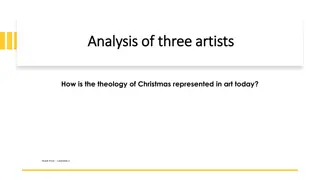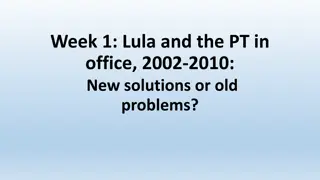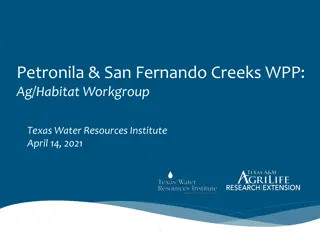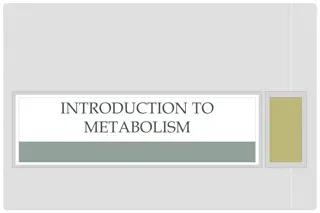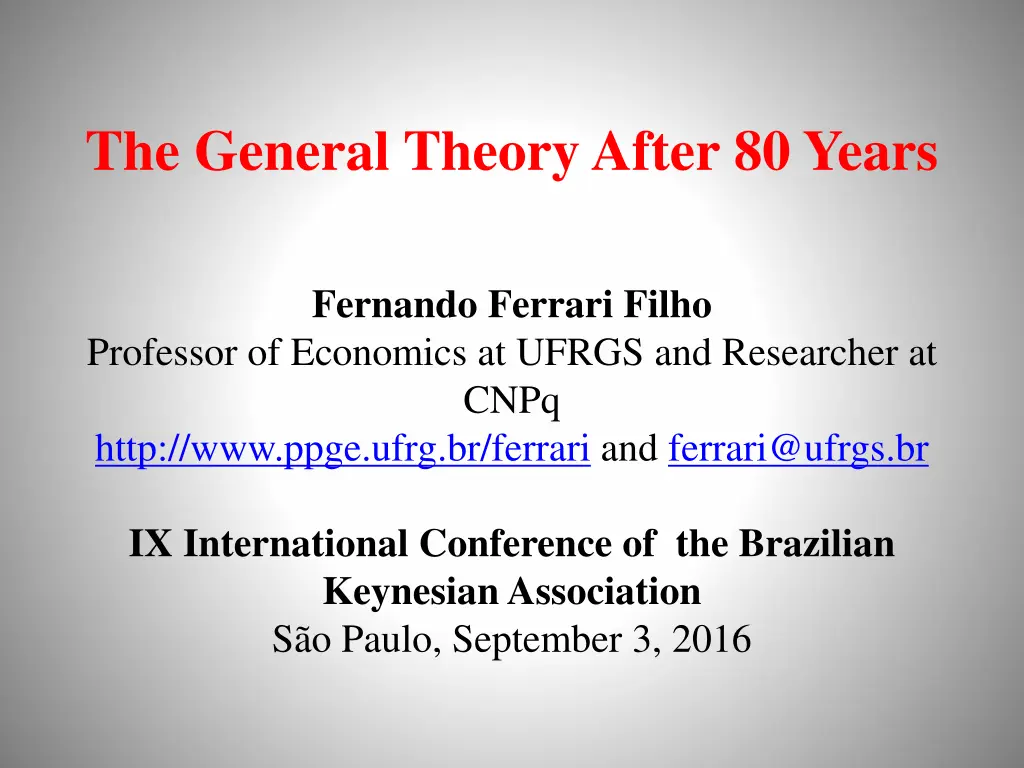
Keynesian Revolution in Economics
Explore the Keynesian revolution in economics brought about by The General Theory, emphasizing the impact on policy frameworks and economic equilibrium dependent on effective demand. Discover the evolution from Treatise on Money to General Theory, emphasizing asset choice theory and the distinction between a co-operative economy and an entrepreneur economy in the context of monetary theory of production. Uncover the significance of money in an entrepreneur economy and its role in fluctuations in effective demand.
Download Presentation

Please find below an Image/Link to download the presentation.
The content on the website is provided AS IS for your information and personal use only. It may not be sold, licensed, or shared on other websites without obtaining consent from the author. If you encounter any issues during the download, it is possible that the publisher has removed the file from their server.
You are allowed to download the files provided on this website for personal or commercial use, subject to the condition that they are used lawfully. All files are the property of their respective owners.
The content on the website is provided AS IS for your information and personal use only. It may not be sold, licensed, or shared on other websites without obtaining consent from the author.
E N D
Presentation Transcript
The General Theory After 80 Years Fernando Ferrari Filho Professor of Economics at UFRGS and Researcher at CNPq http://www.ppge.ufrg.br/ferrari and ferrari@ufrgs.br IX International Conference of the Brazilian Keynesian Association S o Paulo, September 3, 2016
The Keynesian revolution The General Theory (GT) revolutionizes economics at least in two ways: (i) Policy It introduces a new framework in economics, that is, fiscal policy*; (ii) Theory It presents a theory in which the capitalist system is inherently unstable and the economic equilibrium depends on the level of effective demand. (*) The Means to Prosperity, 1933.
How this revolution is developed? From Treatise on Money (TM) to GT: (i) TM Asset choice theory (industrial and financial circulation of capital and bull and bear agents) and endogenous money. in equilibrium (...) when the factors of production are fully employed, when the public is neither bullish nor bearish of securities and is maintaining in the form of savings-deposits neither more nor less than the normal proportion of its total wealth, and when the volume of saving is equal both to the cost and to the value of new investments there is a unique relationship between the quantity of money and the price-levels (...) if the quantity of money were double the price-levels would be double also. But (...) if the volume of
saving becomes unequal to the cost of new investment, or if the public disposition towards securities takes a turn, even for good reasons, in the bullish or in the bearish direction, then the fundamental price-levels can depart from their equilibrium values without any change having occurred in the quantity of money or in the velocities of circulation. (Keynes, 1976: 147) By Industry we mean the business of maintaining the normal process of current output, distribution and exchange and paying the factors of production their incomes (...) By Finance, on the other hand, we mean the business of holding and exchanging existing titles to wealth (...) including Stock Exchange and Money Market transactions, speculation and the process of conveying current savings and profits into the hands of entrepreneurs. (Ibid.: 243)
a bear(...) is one who prefers at the moment to avoid securities and lend cash, and correspondingly a bull is one who prefers to hold securities and borrow cash the former anticipating that securities will fall in cash-value and the latter that they will rise. (Ibid.: 250) (ii) The Distinction Between a Co-operative Economy and an Entrepreneur Economy The modus operandi of a monetary theory of production (uncertainty-money-unemployment). [e]ffective demand may be defined by reference to the expected excess of sale proceeds over variable cost. (Keynes, 1979: 80) Money is par excellence the means of remuneration in an entrepreneur economy ( ) the use of money is a necessary condition for fluctuations in effective demand. (Ibid.: 86)
(iii) GT Asset pricing theory and government intervention to stabilize the economic system. Quotations: unemployment develops ( ) men cannot be employed when the object of desire (i.e. money) is something which cannot be produced and the demand for which cannot be readily choked off. (Keynes, 2007: 235) I see (...) the rentier aspect of capitalism as a transitional phase which will disappear (...) I am advocating (...) the euthanasia of the rentier (...) I conceive ( ) that a ( ) socialisation of investment will prove the only means of securing an approximation to full employment. (Ibid.: 376 and 378)
The relevance of Keynes today The 2007-2008 financial crisis is a failure of the market system (globalization and financial innovation) that was built according to the idea of the love of money as a possession* (Keynes, 1972: 329). Since 2007-2008, fiscal and monetary policies have been implemented to mitigate the great recession and assure full employment . The world economic reform require[s] restricting the role of finance [financial globalization] (Skidelsky, 2009: 173). A new Bretton Woods/Clearing Union Plan? Inflation Targeting Regime vis- -vis NominalGDP Growth Target. (*) Economic Possibilities for Our Grandchildren (1930).
References KEYNES, J.M. (1972). Essays in Persuasion. London: Macmillan. _____ (1976). Treatise on Money: The pure theory of money: volumes I and II. New York:AMS Press. _____ (1979). The General Theory and After: A supplement. London: Macmillan. _____ (2007). The General Theory of employment, Interest and Money. New York: Palgrave Macmillan SKIDELSKY, R. (2009). Keynes: the return of the master. New York: PublicAffairs.

